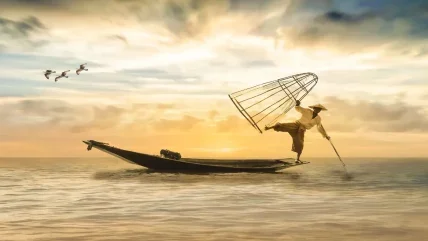
Shoninbori Tekkosho, a shipbuilder in Ishinomaki, Miyagi Prefecture, Japan, produces aluminium boats for commercial fishing.
A dozen years ago, the company and the city of Ishinomaki were victims of the Great East Japan Earthquake and subsequent tsunami, which devastated the region and caused the Fukushima nuclear disaster.
Both Shoninbori Tekkosho and the city’s residents are recovering and overcoming the damage they suffered in the tsunami following the quake.
Shoninbori Tekkosho, president Takashi Kakinuma, says that the company builds the smaller purse-seine boats, which must be light, rust-resistant and sturdy. The ribs and hull plates are cut from a single aluminium sheet, mostly by machine and some by hand. Welding aluminium, which is softer than steel, is said to be particularly difficult, requiring advanced techniques and experience. The ribbed skeleton is welded to the keel, the hull plates attached, and with engine and cockpit installed the boat is complete.
In the shipyard separate teams of four to six people build the hulls and superstructures and install engines and other equipment, each team working through to completion of each boat order, which takes about five months.
A number of Kito’s flagship electric chain hoist, the ER2, are used in this shipyard. Four ER2s with a capacity of 5.0 tons are used to mount parts to the hull, and another four ER2s with a capacity of 7.5 tons are used to reverse and carry the hull.
The company usually delivers packages of four boats, numbered 1, 2, 3 and 5 – skipping 4, considered an unlucky number in Japan because it sounds the same as the word for death – to customers spread nationwide, from Kyushu to Hokkaido.
Sign up for FREE weekly newsletter
Sign up for FREE digital edition of the magazine
RELATED STORIES
• Harrington/Kito introduces new mini entertainment chain hoists
• Kito crane improves efficiency at sake brewery: A case study


